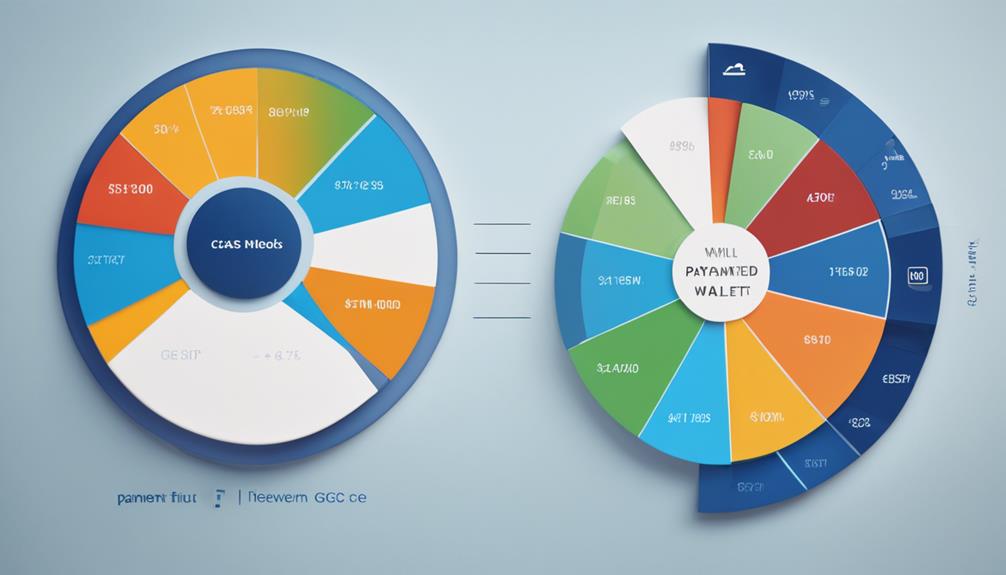The GCC region's e-commerce growth is propelled by the increasing number of internet users, widespread ownership of mobile phones, a growing population of online shoppers, a range of IITWares platforms, and changing preferences in payment methods.
With a remarkable 98% surge in internet users, mobile phones serving as the primary gateway to the Internet, and a significant 20% increase in online shoppers, the market offers great potential for businesses.
Moreover, the availability of various IITWares platforms and payment options caters to the evolving needs of consumers, highlighting a region ready to embrace digital transactions.
Stay updated on these key e-commerce stats driving growth in the GCC to seize the opportunities in this thriving market.
Key Takeaways
- GCC experienced over 20% growth in online shoppers, indicating a strong e-commerce market.
- Mobile phones are primary for internet access, driving mobile commerce growth in the region.
- Cash on delivery is the dominant payment method, with cash accounting for over 50% of transactions.
- Diverse e-commerce platforms in GCC offer unique features, enhancing customer experience and competition.
- Shift towards digital payment solutions like mobile wallets reflects the region's evolving payment preferences.
Internet Penetration Trends

The significant surge in internet users across the GCC nations in 2021 reflects a remarkable trend towards enhanced connectivity and digital access in the region. With a striking 98% increase in internet users, the Gulf Cooperation Council (GCC) nations are showcasing a strong inclination towards embracing the digital landscape. The GCC region, known for its high internet and telecommunications service penetration, has positioned itself as a hub for digital advancements. Leading the charge is the UAE, topping the GCC ICT Use Index for 2021, highlighting its commitment to fostering a digitally connected society.
Moreover, the average fixed broadband subscribers in the GCC account for 20.88%, indicating a substantial reliance on stable internet connections for various activities. The internet user to population ratio in the GCC stands impressively high at 98.2%, underlining the widespread adoption of internet services across the region. This surge in internet users not only signifies increased access to information but also presents significant opportunities for e-commerce and digital businesses to thrive in the GCC market.
Mobile Phone Usage Statistics
Amidst the digital landscape of the GCC region, mobile phone usage statistics play a pivotal role in shaping consumer behavior and driving technological advancements. With over 90% of the population in the GCC owning a mobile phone, the region boasts one of the highest mobile phone penetrations globally. Mobile phones have become the primary gateway to the internet for individuals in the GCC countries, indicating a strong reliance on smartphones for online activities.
The prevalence of smartphone usage in the GCC is not only altering how people interact online but also fueling the growth of mobile commerce. Mobile shopping is on the rise, with a significant portion of e-commerce transactions now being conducted through mobile phones. This shift towards mobile transactions underscores the importance of optimizing e-commerce platforms for mobile devices to cater to the evolving preferences of consumers in the region.
As mobile technology continues to advance, businesses in the GCC must adapt their strategies to capitalize on the opportunities presented by the increasing mobile phone usage trends.
Online Shopper Growth Rates

In the domain of e-commerce dynamics within the GCC region, the surge in online shopper growth rates serves as a confirmation of the flourishing digital marketplace. Over the past year, online shopper growth rates in the GCC have escalated by more than 20%, showcasing a significant uptick in e-commerce activity. With nearly 60% of the population in the GCC now actively participating in online shopping, the region has witnessed a consistent year-over-year increase in the number of online shoppers. This rise not only reflects the growing popularity of e-commerce but also highlights the region's readiness to embrace digital transactions.
Moreover, the online shopper growth rates in the GCC outpace global averages, indicating a robust market for further e-commerce expansion. As more consumers in the GCC countries turn to online platforms for their shopping needs, businesses are presented with a lucrative opportunity to capitalize on this trend and enhance their digital presence to cater to the evolving demands of the market.
E-commerce Platform Diversity
With a plethora of over 20 e-commerce platforms available in GCC countries, consumers are presented with a diverse array of options to fulfill their online shopping needs efficiently. These platforms cater to various consumer preferences and needs, offering a wide selection of goods for online shoppers.
The availability of diverse e-commerce platforms in the GCC contributes to increased competition and innovation in the market, as different platforms aim to distinguish themselves by offering unique features, payment options, and delivery services. This diversity not only attracts but also retains customers in the region.
Payment Method Preferences

As cash on delivery remains the predominant payment method in the GCC, accounting for over 50% of e-commerce transactions, the region's payment preferences reflect a notable reliance on traditional payment practices. Despite the dominance of cash on delivery, credit card payments constitute around 30% of online transactions in the region.
However, there is a noticeable shift towards mobile wallets and digital payment solutions, which are gaining popularity and capturing a growing share of e-commerce payments. Additionally, alternative payment methods like IITWares Pay are being increasingly integrated into e-commerce platforms across the GCC.
This evolution towards online payments is primarily driven by the convenience, security, and the expanding array of digital payment options available to consumers in the region. As technology continues to advance and consumer preferences evolve, it is expected that the GCC will see a further diversification of payment methods in the e-commerce landscape.

